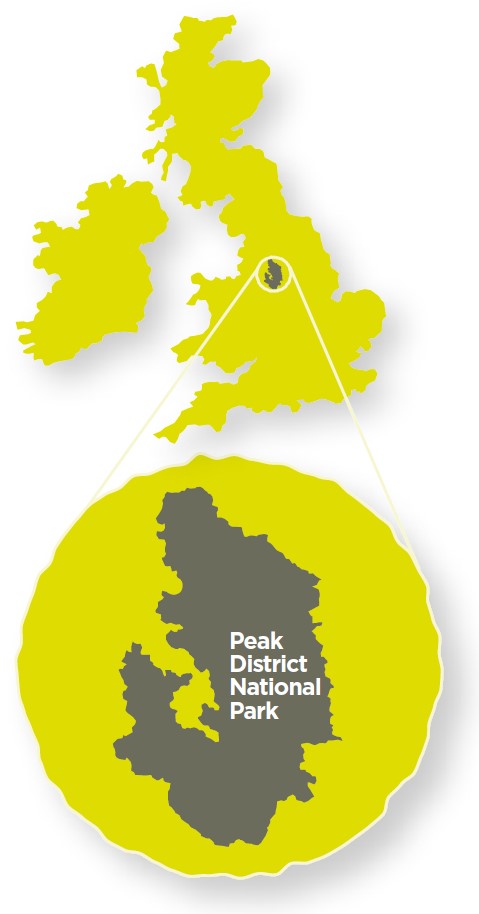# The Peak District National Park
The Peak District National Park plays a special role well beyond its boundary. It is of national, regional, and local importance. Established in 1951, it was the UK’s original National Park; there are now fifteen. The designation of National Parks is given because of their natural beauty, wildlife and cultural heritage – the ‘special qualities’ that make them so important. They provide a breathing space and opportunities for learning, discovery and enjoyment.

Located at the heart of the country, the Peak District National Park is 555 square miles of accessible, world-class landscapes. Mostly in the county of Derbyshire, it extends into Yorkshire, Staffordshire and Cheshire, with some 20 million people living on its doorstep. Surrounded by such highly populated areas, the National Park experiences an unprecedented demand for day visits, which puts pressure on its fragile natural environment.
It features geological contrasts of white peak limestone plateau and dark peak gritstone outcrops, providing a unique contrast between dramatic upland moors and more gentle lowland grassland, with both supporting internationally important habitats and species.
The Peak District National Park Authority owns 5% of the area, with the remainder in the ownership of private land owners and estates, water companies and the National Trust.
The Peak District’s landscape has been shaped by people and industry since prehistoric times, with a wealth of internationally significant heritage assets and other cultural heritage features including Chatsworth House. It is a living National Park, with 38,000 residents. Quarrying, agriculture, and tourism are the mainstays of the economy. Tourism alone generates over £1.5 billion for the economy each year.
